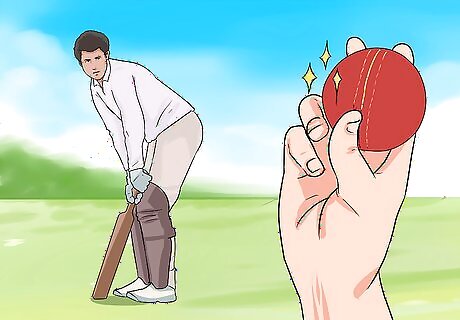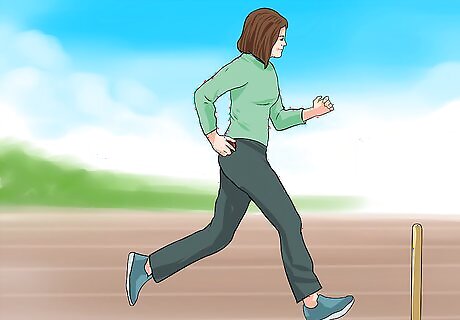
views
Preparing the Ball

Select a relatively young ball. Aerodynamics play a crucial role in swing bowls, and the longer a ball has been in use, the more its surface changes over time. Balls that have been in use for 20 years or more tend to effect a “reverse swing,” which means that the technique used to pitch a natural outswinger may result in an inswinger instead.

Choose one side of the ball to polish. The primary seam of a cricket ball runs along the ball’s center, creating two halves. Polishing one half will decrease air resistance on that side, causing the ball to swing in the direction of its other, rougher side when thrown.

Apply spit or sweat to the polished side. Rub it in with your trousers. Repeat frequently throughout the game, in between each delivery.

Inform your teammates as to which side is which to ensure consistency. Encourage them to shine the ball further while it’s in their possession during the match.
Gripping the Ball

Angle the seam toward the slips. Rather than keeping the primary seam vertical, it should be angled slightly away from the batter.

Hold the ball with the polished side facing the batsman, or their “leg side.” The aim of the out swing is to force the batsman to strike the ball away from his body, on his “off side.” Since the ball will swing in the direction of its rough side, grip the ball with the rough half facing the batsman’s off side.

Grip the ball with your thumb along the seam on the bottom. Spread your index and middle fingers slightly apart from each other along the seam on top.

Aim the seam at your first or second slip fielder. The ball will swing wherever you aim the seam, so angling the seam away from the batsman, at a 15-20º toward the slips, will send the ball towards them instead of directly at the batsman.
Running up to Bowl

Allow plenty of distance for your run-up. More distance will allow you to build momentum for a powerful delivery.

Face your target. Your body’s momentum will instinctively follow the direction in which your head is aimed. Hold your head steady with your eyes fixed on your target.

Balance your run. Speed alone can deliver a powerful bowl, but a steady rhythm helps, too. Keep your speed consistent and your motions fluid, balanced, and relaxed.

Increase your strides as you near the batsman. Run straight in like an athlete as you approach the stump.
Bowling the Ball

Bowl close to the stump. Once bowled, the ball should ideally begin to swing late in its delivery. Decrease the distance between yourself and the batsman before you bowl to ensure that the ball doesn’t swing too soon.

Tempt the batsman to play the ball. Aim at either the stump itself or very close to it.

Focus on your front arm. Keep it high at first. Then, as you bowl, pull it straight down, close to your body. This will keep the front of your body clear for your bowling arm to follow through after the ball’s release.

Release the ball. Pitch it while your bowling arm is still high. When you release the ball, angle your wrist down and across the ball toward the slips. Follow through by bringing your bowling arm down across your body so that your fingers touch your other armpit.




















Comments
0 comment